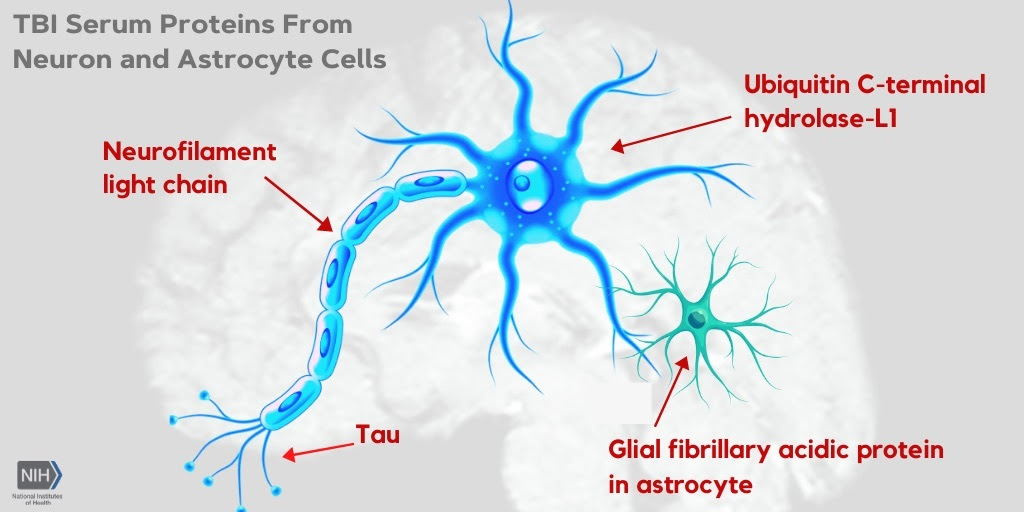Embargoed for Release
Wednesday, July 8, 2020
4 p.m. EDT
Contact:
301-852-9887
NfL outperforms other blood tests to predict and diagnose traumatic brain injury
A study from the National Institutes of Health showed that neurofilament light chain (NfL) delivered superior diagnostic and prognostic performance as a blood biomarker for mild, moderate, and severe traumatic brain injury (TBI) when compared to blood proteins glial fibrillary acidic protein, tau, and ubiquitin c-terminal hydrolase-L1. The research was conducted by scientists at the NIH Clinical Center, Bethesda, Maryland, and published in the July 8, 2020, online issue of Neurology.

“This study confirms the sensitivity of serum neurofilament light chain and its value as a biomarker of choice for all stages of brain injury, even when measured months to years after a single mild, moderate or severe traumatic brain injury,” said Leighton Chan, M.D., M.P.H., chief of the Rehabilitation Medicine Department at the NIH Clinical Center.
The scientists selected and studied four proteins from the brain that collect in the blood after a TBI from patients at the NIH Clinical Center who had mild, moderate, or severe injury. The proteins were compared on their ability to distinguish patients with TBI from each other and controls, determine brain injury from 30 days to five years after injury, predict functional outcomes, and compliment advanced brain imaging.
Serum NfL was better than the other proteins at identifying patients with mild, moderate, and severe TBI from each other and controls at a median of seven months after injury. Additionally, serum NfL was the only protein that showed an association to functional outcomes with higher concentrations in the blood of patients with worse or lower outcome.
Serum NfL was the only protein that distinguished TBI patients from uninjured controls with high accuracy even months to years after the injury. This result suggests that a single TBI may cause long-term neuroaxonal degeneration, which may be detected by measuring serum NfL.
Serum NfL also had the strongest association to advanced brain imaging, such as diffusion tensor MRI scans, than the other proteins. This suggests that serum NfL can provide clinicians with an easier, faster, and cost-effective diagnostic and prognostic option than advanced brain imaging.
“Currently, there is no validated biomarker that can reliably detect the subtle signs of brain injury months to years after a traumatic brain injury,“ said lead author, Pashtun Shahim, M.D., Ph.D. “Our study shows that the amount of serum NfL was higher even at five years after a single traumatic brain injury, while the other proteins we measured in this study, although, detectable in blood, were not high enough to distinguish patients from controls.”
About the NIH Clinical Center: The NIH Clinical Center is the world’s largest hospital entirely devoted to clinical research. It is a national resource that makes it possible to rapidly translate scientific observations and laboratory discoveries into new approaches for diagnosing, treating, and preventing disease. Over 1,600 clinical research studies are conducted at the NIH Clinical Center, including those focused on cancer, infectious diseases, blood disorders, heart disease, lung disease, alcoholism and drug abuse. For more information about the Clinical Center, visit https://clinicalcenter.nih.
About the National Institutes of Health (NIH): NIH, the nation's medical research agency, includes 27 Institutes and Centers and is a component of the U.S. Department of Health and Human Services. NIH is the primary federal agency conducting and supporting basic, clinical, and translational medical research, and is investigating the causes, treatments, and cures for both common and rare diseases. For more information about NIH and its programs, visit www.nih.gov.






















.png)











No hay comentarios:
Publicar un comentario